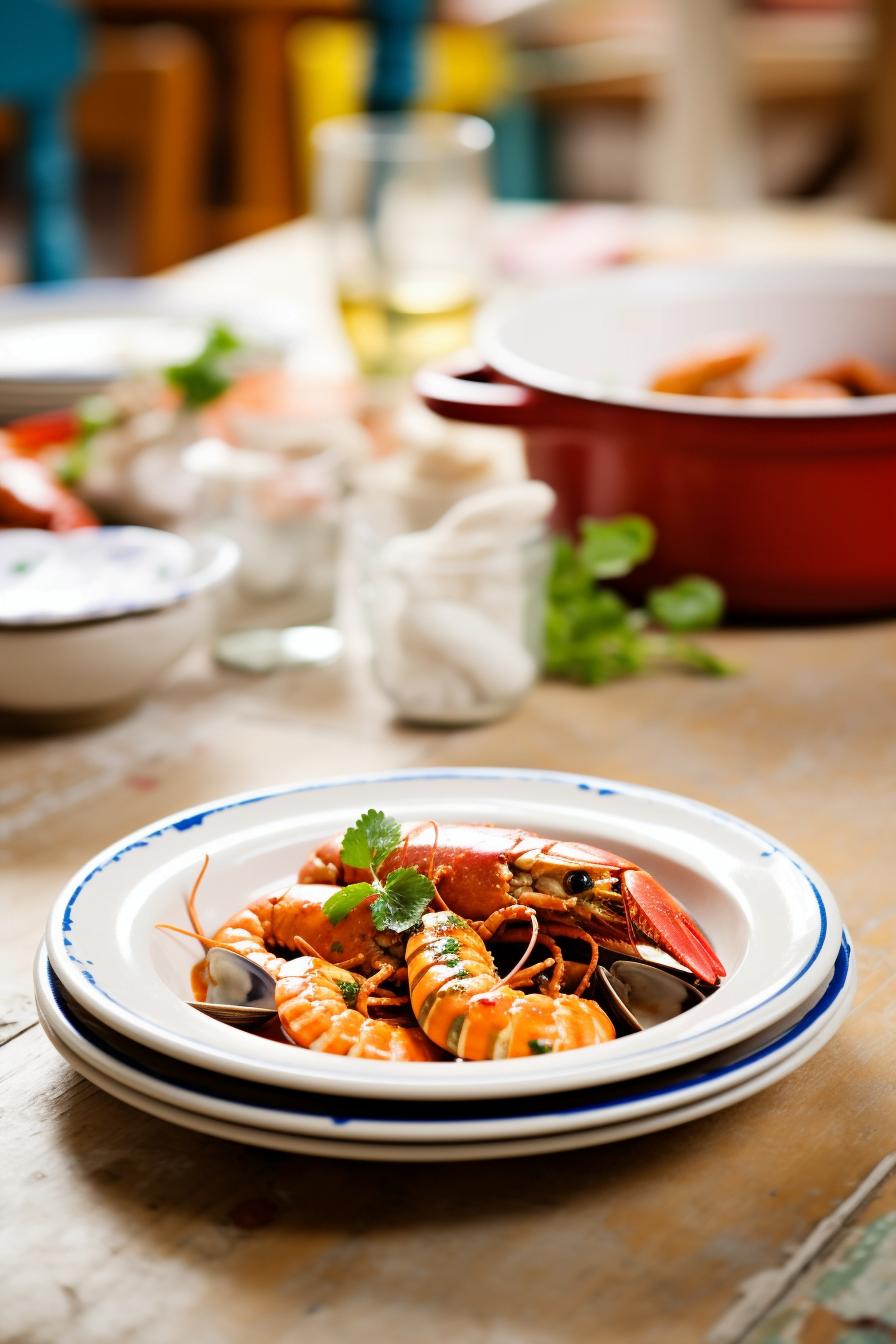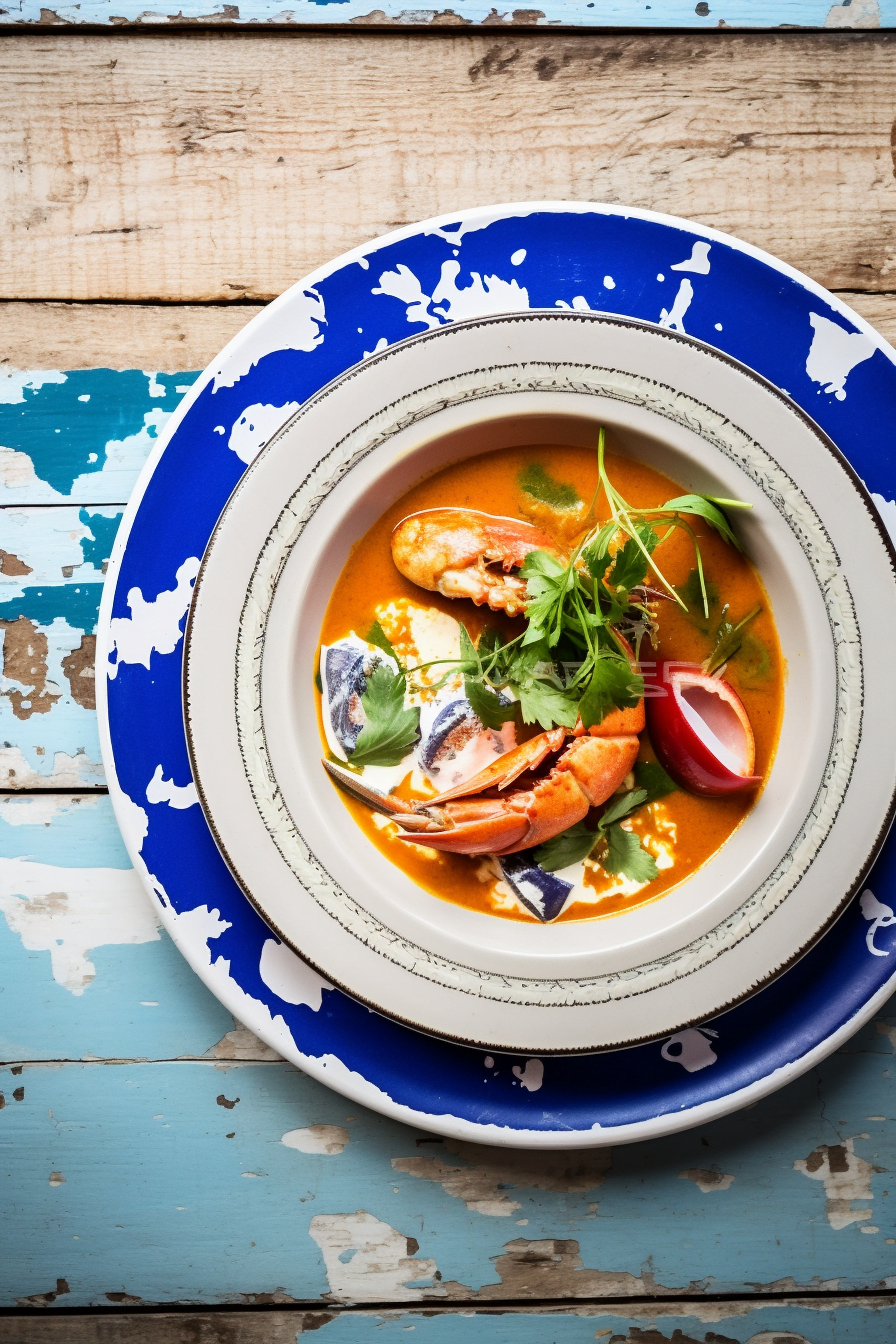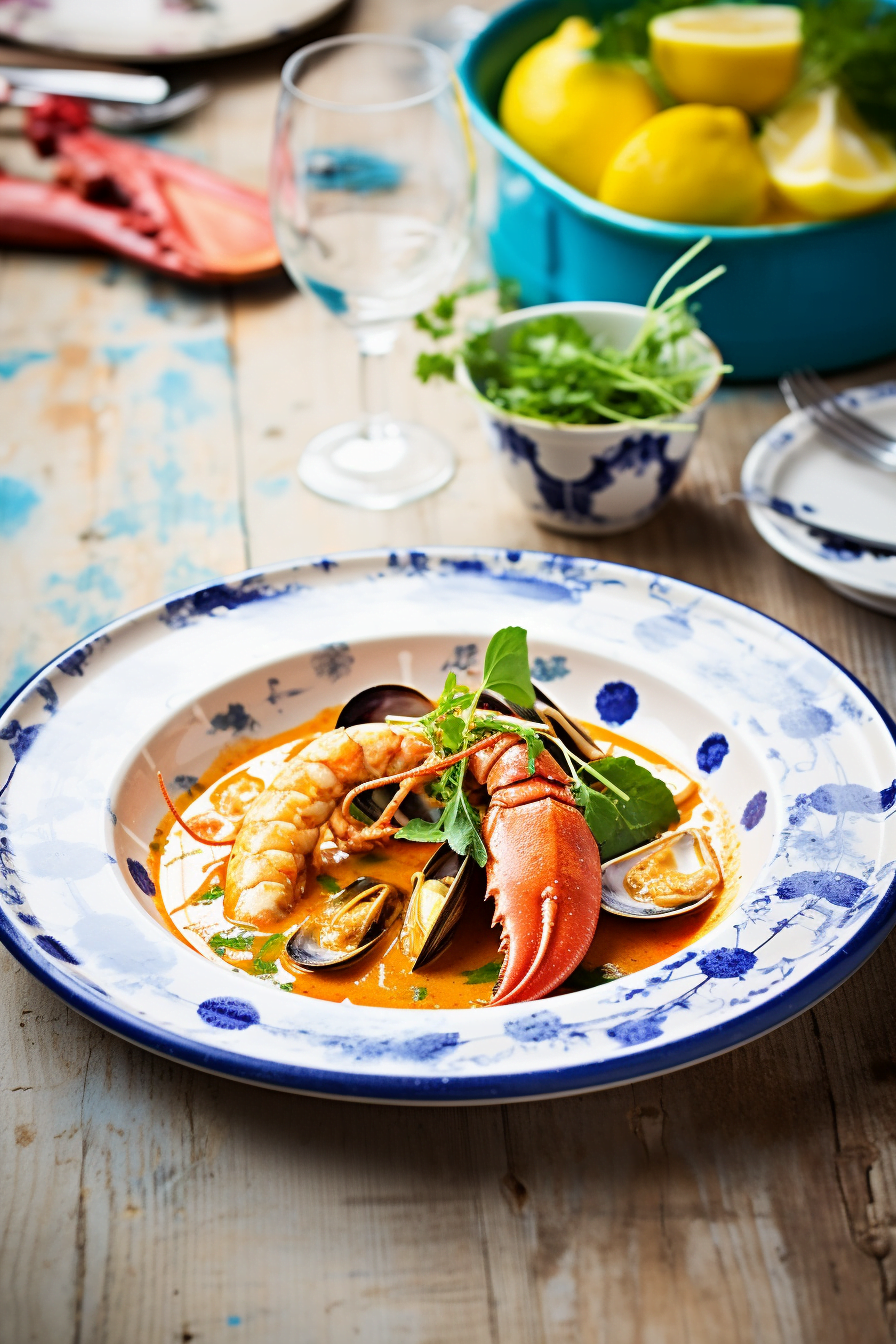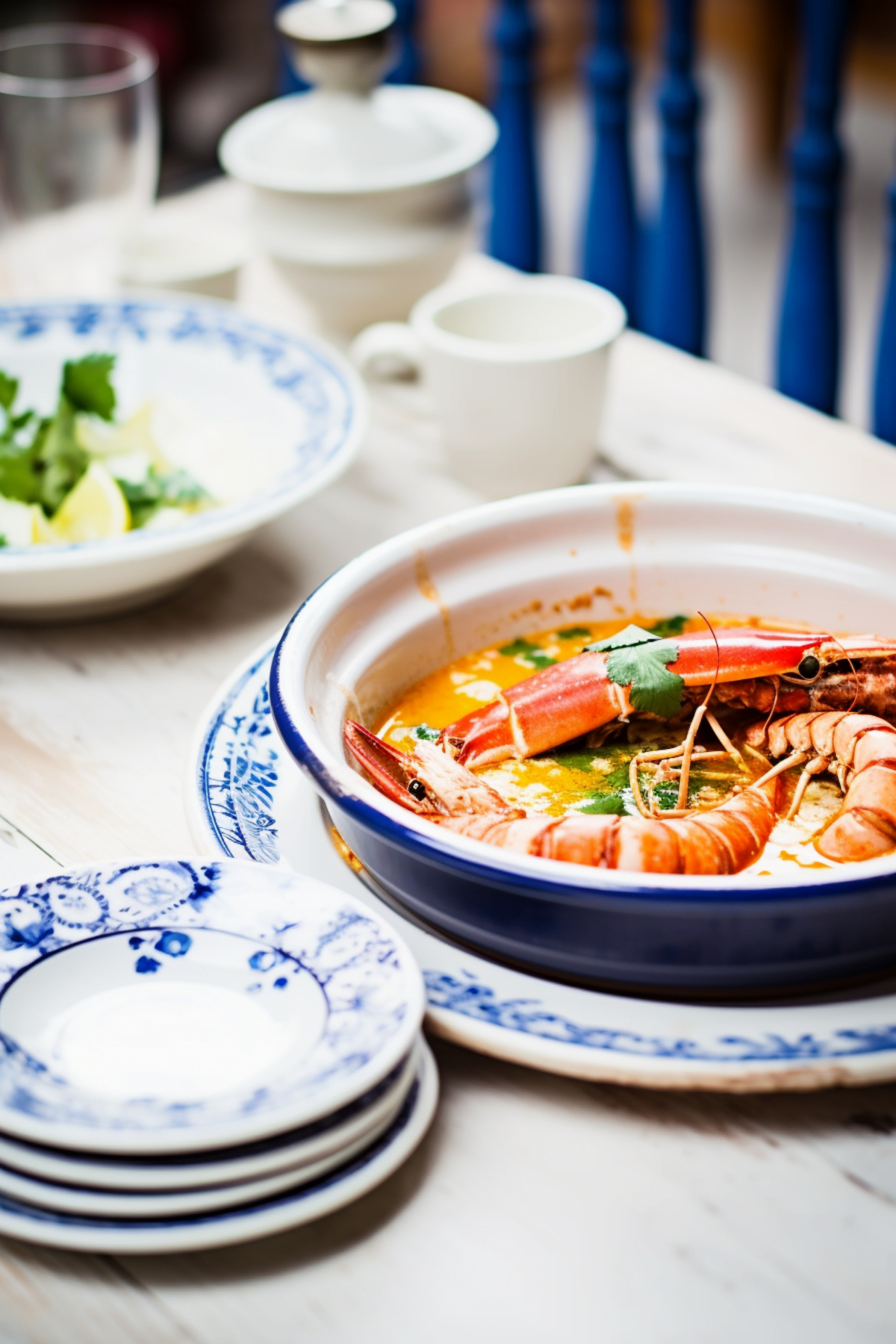Indulge in the Essence of Menorca with Caldereta de Langosta
Embark on a culinary journey to the Balearic island of Menorca, where the Menorcan Lobster Stew, locally known as Caldereta de Langosta, reigns supreme. This luxurious dish captures the essence of Mediterranean flavors, combining succulent lobster with a rich, tomato-based broth. Whether you’re a seafood aficionado or a lover of Spanish cuisine, this recipe promises to deliver an unforgettable dining experience.
Perfect for special occasions or a lavish weekend dinner, the Caldereta de Langosta is a testament to the island’s love affair with the fruits of the sea. Immerse yourself in the tradition and taste of Menorca as you prepare to create a masterpiece that’s as visually stunning as it is delicious.

The Story Behind Menorcan Lobster Stew
The Caldereta de Langosta is not just a dish; it’s a cultural emblem of Menorca, a small yet captivating island in the Mediterranean. This stew is steeped in history, with its roots tracing back to the humble fishermen who sought to nourish their families with the day’s catch. Over time, the recipe has evolved, transforming into a sophisticated dish that’s celebrated across the island and beyond.
Its inspiration lies in the azure waters surrounding Menorca, where lobsters are caught and revered for their exceptional quality. The stew is traditionally prepared in a caldero, a large pot that lends the dish its name. Each ingredient is chosen with care, from the ripe tomatoes that form the base of the broth to the fragrant saffron that imparts a golden hue and a hint of luxury.
The true magic of the Caldereta de Langosta lies in its simplicity and the quality of its ingredients. Every element works in harmony, highlighting the lobster’s delicate flavor. It’s a dish that brings families together, often enjoyed during festive gatherings and summer feasts, always paired with a crisp white wine that complements the stew’s rich flavors.

Mastering the Menorcan Lobster Stew
Creating the perfect Caldereta de Langosta is an art form, one that requires patience and attention to detail. The process begins with the humane dispatching of the lobsters, a crucial step that must be done with respect and care. Once the lobster is prepared, the focus shifts to building layers of flavor.
**Sautéing the Vegetables**: The foundation of any great stew is the sofrito, a sauté of onions, garlic, and bell peppers. Cook these until they are just softened, being careful not to brown them, as this could impart a bitter taste to the dish.
**Tomatoes and Wine**: The addition of ripe, peeled tomatoes and a good quality white wine enriches the broth, creating a base that is both aromatic and flavorful. Allow the wine to reduce to intensify the flavors before adding the fish stock.
**Lobster and Seasonings**: Introducing the lobster to the pot is a pivotal moment. The shell imparts a deep, oceanic essence to the stew, while the sweet paprika and saffron add color and a subtle complexity. It’s important to simmer the lobster gently to ensure it remains tender.
**Final Touches**: Seasoning is key. Taste as you go, adjusting the salt and pepper to your preference. The addition of fresh parsley not only adds a burst of color but also a fresh, herby note that balances the richness of the stew.
Remember, the secret to an exceptional Caldereta de Langosta is in the simmering. Allow the stew to cook slowly, enabling the flavors to meld together harmoniously. Serve it hot, with toasted slices of baguette to soak up the sumptuous broth.

Variations of Caldereta de Langosta
Vegetable-Enhanced Caldereta
For a more vegetable-forward version of the stew, consider adding chunks of potato, carrot, and a handful of peas. These additions not only contribute extra texture and flavor but also make the dish more substantial.
Caldereta with Different Seafood
While lobster is the star of this dish, you can also create a delightful stew using other types of shellfish such as crab, prawns, or even a mix of seafood for a Menorcan-style mariscada.
Spicy Caldereta Twist
If you enjoy a bit of heat in your dishes, introduce a pinch of cayenne pepper or a few slices of fresh chili to the sofrito. This will give the stew a spicy kick that contrasts beautifully with the sweet lobster meat.
Substitutions for Caldereta de Langosta
While the traditional recipe calls for specific ingredients, there are substitutions you can make without compromising the integrity of the dish.
**Lobster Alternatives**: If live lobsters are not accessible, high-quality frozen lobster tails can be used. Thaw them properly to maintain the texture and flavor.
**Fish Stock Replacement**: In the absence of fish stock, a light vegetable broth or even chicken stock can serve as a suitable base for the stew, although it will slightly alter the flavor profile.
**Wine Variations**: If white wine is not available, a splash of dry sherry can be an excellent alternative, adding a similar depth and acidity to the stew.
Frequently Asked Questions
Q: Can I make Caldereta de Langosta ahead of time?
A: It’s best enjoyed fresh, but you can prepare the broth a day in advance and add the lobster just before serving.
Q: What’s the best wine to pair with this dish?
A: A crisp, dry white wine like Albariño or a Verdejo complements the flavors beautifully.
Q: How can I ensure the lobster meat stays tender?
A: Avoid overcooking by simmering the lobster gently and checking for doneness after 20 minutes.
Q: Is it possible to use canned tomatoes?
A: Yes, high-quality canned tomatoes can be a practical substitute for fresh ones.
Q: Can I add other herbs to the stew?
A: Certainly, herbs like thyme or a bay leaf can add additional layers of flavor to the stew.

Menorcan Lobster Stew (Caldereta de Langosta)
Equipment
- Large pot or Dutch oven
- Chef's knife
- Cutting board
- Wooden spoon
- Measuring cups and spoons
Ingredients
- 2 live lobsters (about 1.5 pounds each | 680 grams each)
- 1/4 cup extra virgin olive oil (60 ml)
- 1 large onion, finely chopped
- 4 cloves garlic, minced
- 1 red bell pepper, diced
- 1 green bell pepper, diced
- 2 medium tomatoes, peeled and diced
- 1/2 cup white wine (120 ml)
- 4 cups fish stock (960 ml)
- 1 bay leaf
- 1 tsp sweet paprika (2 grams)
- 1 pinch saffron threads
- 2 tbsp flat-leaf parsley, chopped (30 ml)
- Salt and pepper to taste
- 1 small baguette, sliced and toasted, for serving
Instructions
- Begin by killing the lobsters humanely. Place them in the freezer for 30 minutes to numb them. Quickly cut through the head with a sharp knife to dispatch them.
- Separate the lobster tails and claws from the body. Crack the claws and remove the meat, setting it aside. Cut the tails into medallions, keeping the shell on for flavor.
- In a large pot or Dutch oven, heat the olive oil over medium heat. Add the onion, garlic, and bell peppers, sautéing until the vegetables are soft but not browned, about 8 minutes.
- Stir in the diced tomatoes and cook for an additional 5 minutes, allowing the flavors to meld.
- Deglaze the pot with the white wine, scraping up any browned bits from the bottom. Allow the wine to reduce by half.
- Pour in the fish stock, add the bay leaf, paprika, and saffron. Bring the mixture to a simmer.
- Gently add the lobster pieces to the pot. Cover and simmer for 20 minutes, or until the lobster is cooked through.
- Season the stew with salt and pepper to taste, and stir in the chopped parsley.
- Serve the Menorcan Lobster Stew hot, accompanied by slices of toasted baguette to soak up the rich broth.
Notes

